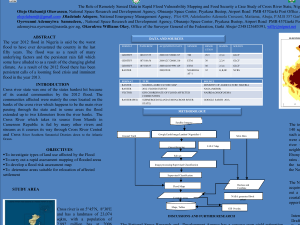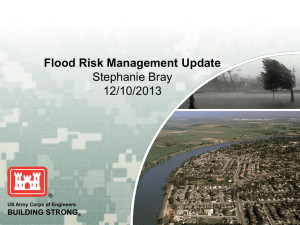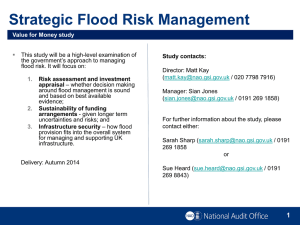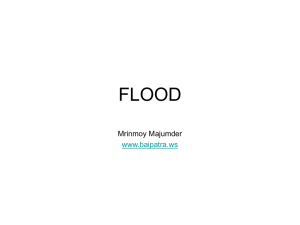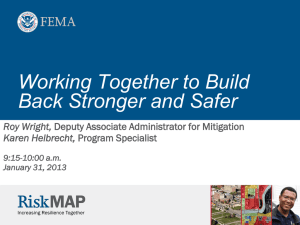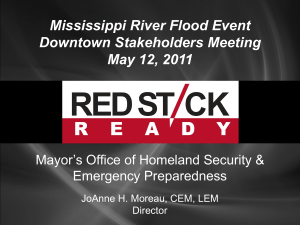Flood Inundation Map and Warning System for Downtown St. Paul
advertisement
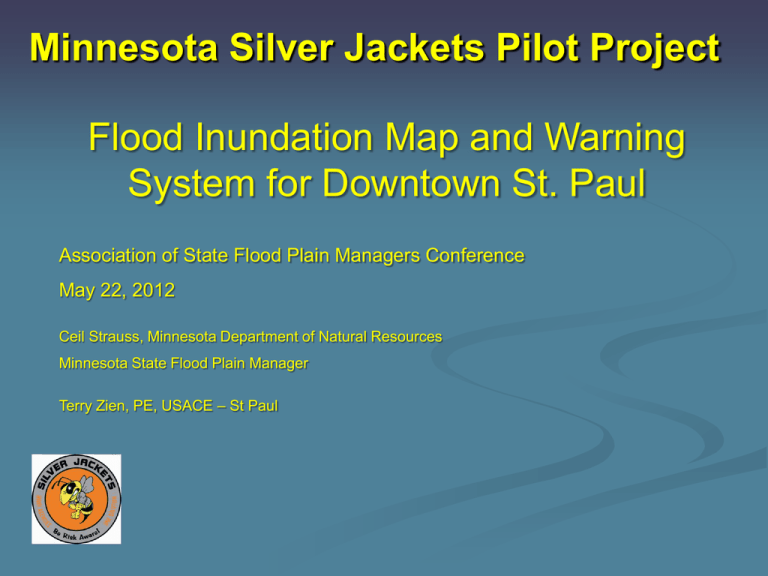
Minnesota Silver Jackets Pilot Project Flood Inundation Map and Warning System for Downtown St. Paul Association of State Flood Plain Managers Conference May 22, 2012 Ceil Strauss, Minnesota Department of Natural Resources Minnesota State Flood Plain Manager Terry Zien, PE, USACE – St Paul Flood Inundation Map and Warning System for Downtown St. Paul - Study Limits Downtown Upper Landing & Harriet Island Airport Flood Inundation Map and Warning System for Downtown St. Paul Objectives Leverage existing resources USACE HEC-RAS unsteady model for the Mississippi Existing USGS gage location and long period of record NWS forecast point City of St. Paul survey data FEMA HAZUS Database Studies by others 1965 1952 2001 Flood Inundation Map and Warning System for Downtown St. Paul - Study Features Upper Landing & Harriet Island Harriet Island Downtown St Paul 1952 Flood Downtown St. Paul Looking Upstream Mississippi River, Left Bank Downtown St. Paul Looking Downstream Mississippi River, Left Bank St Paul Airport Area St Paul Airport (circa 1943) St. Paul, MN Airport Temporary floodwalls are put up in area that is now flood fringe. Objectives - Continued Create a flood inundation map Define flood risk Scenario-based Enhanced NWS forecast capabilities Inform public policy decisions (land use, zoning, permitting) Develop/improve flood warning systems Objectives - Continued Produce public education materials Potential to work with the Science Museum of Minnesota Video display kiosk Guide mitigation efforts Flood plain information exposure to natural and beneficial uses Objectives - Continued Reduce future risk to life and property! Improve urban planning Enhance flood warning system Update existing FEMA NFIP data & documents for the study area Promote wise use of the flood plain Reduce future expenditures on recovery Objectives - Continued Promote actions by others Updated emergency action plan Structural and non-structural flood mitigation strategy implementation Targeted flood warning system Public outreach in and around inundation area Potential to Increase CRS Credit: FEMA will investigate the possibility to provide CRS credit to those communities who obtain inundation mapping studies as a tool for flood risk mitigation. St. Paul could consider becoming a CRS community Status Update Milestones Accomplished SOW in progress with SJ team, IWR team Developed a project time line Identified current HEC-RAS model to be used as a basis for water surface profiles, began modeling Identified meaningful scenarios for HEC-RAS model Begun gathering additional data needed for model, risk identification, and map production Challenges / Limiting Factors / Gaps Sharing of digital source data/products across different agencies HAZUS data base may not be the best to define detailed risk information/consequences at this level of investigation Newer, better LIDAR data in progress, may not be ready

